On Friday, October 20, we came together for the final workshop in the three-part Me(dia) Response Self-Awareness and Activism Through Art-Making series at MIT List Visual Art Center.
Photojournalist Dominic Chavez presented his work and recounted tales of visiting Sierra Leone, Iraq and other conflict areas where he's documented everything from wars to Aids victims to the Ebola outbreak. Chavez was genuine and direct in sharing the approach that he takes to his work ("I hold my heart in my hands"), the state in which he returns home ("I'm a train wreck"), and his methods for coping with what he witnesses (from cooking to finding art experiences, to long, aimless car rides).
Danielle Benaroche Gottesman followed Chavez and shared insight into the importance of self-care in managing the barrage of stressful circumstances, including violent imagery. She illustrated the schism between our lower, reptilian brain and the more evolved, upper brain and how stress can trigger the lower brain to take over and provoke irrational feelings of fear and insecurity. Meditation, Gottesman suggests, is a practice that can support a fluid shift from the lower brain to higher one during stressful moments. As she puts it, when a child is in a tantrum, he is in an unsafe and fearful space. The parent works to bring him to a place of safety then later dissect the situation, offering coping tools. Meditation can serve as that parent or guide. There is no right way to meditate, or ideal length, and Gottesman recommends tools like Insight Timer and YouTube to support a meditation practice.
The workshop culminated with an invitation to destroy the final accumulation — a world made of all past accumulations — per the suggestion of participants in the second workshop. Participants were hesitant at first. "It's too beautiful to destroy," one woman said. But once a few people began to remove pieces they liked, everyone else joined in.
More than one participant took the original piece they'd contributed in the first workshop. One participant took her accumulation plus other materials and promises to keep the work alive. I can't wait to see what she creates!
At the end, within the seeming pile of trash, I found one accumulation made in the first workshop that had been barely altered through the three possible iterations. This accumulation with the headline "Boy, 3, dies" on the top harkened back to the original trigger for this work. It was the picture of Alan Kurdi found face-down washed ashore on September 2, 2015 that began my investigation into violent imagery in media and the prompt for the first workshop at the Gardner Museum.
Now, over two years later I can say I have more tools at hand for keeping current with worldly news and processing it. Through meditation, conversation and continued art making, I strive to be present and to take action.

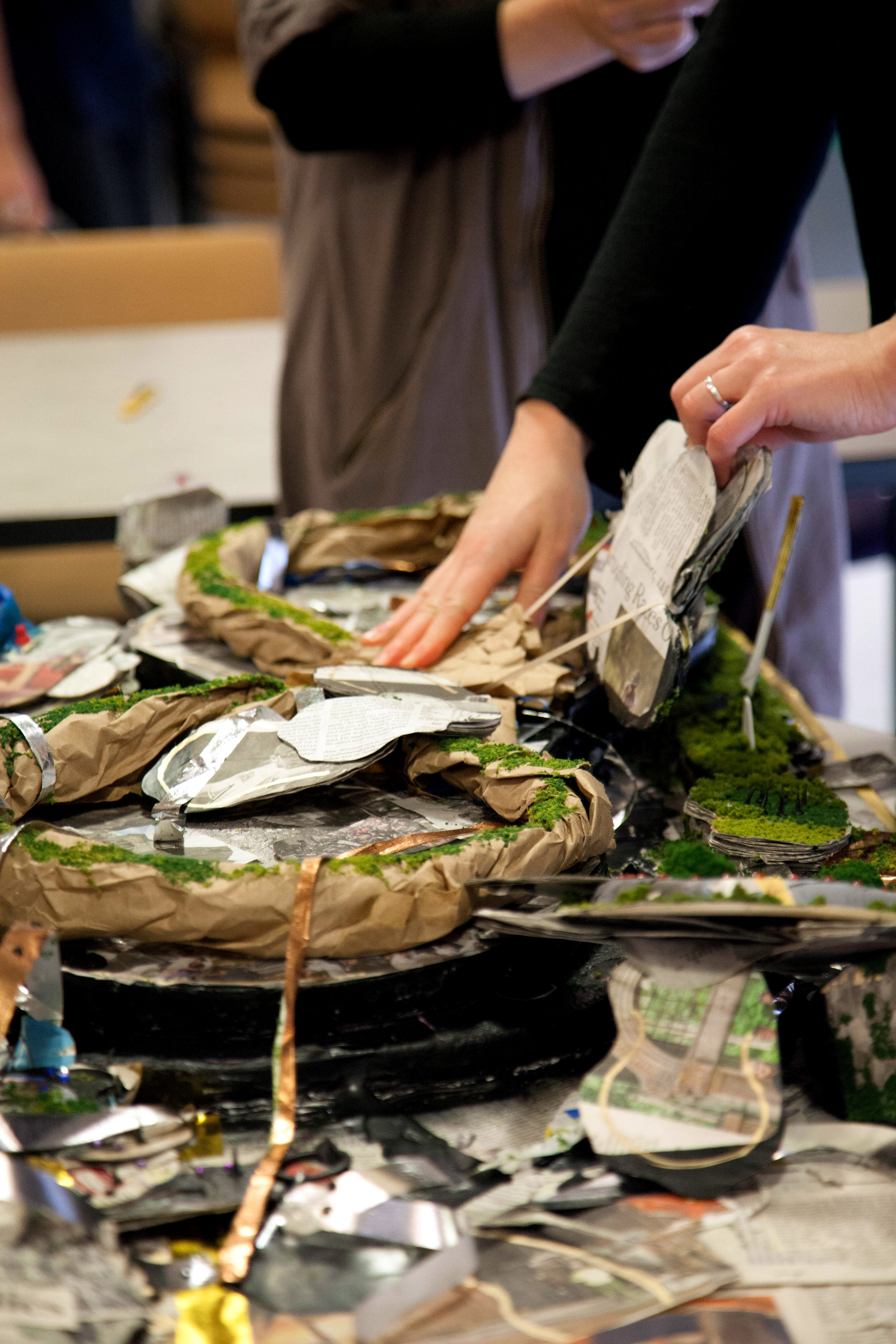
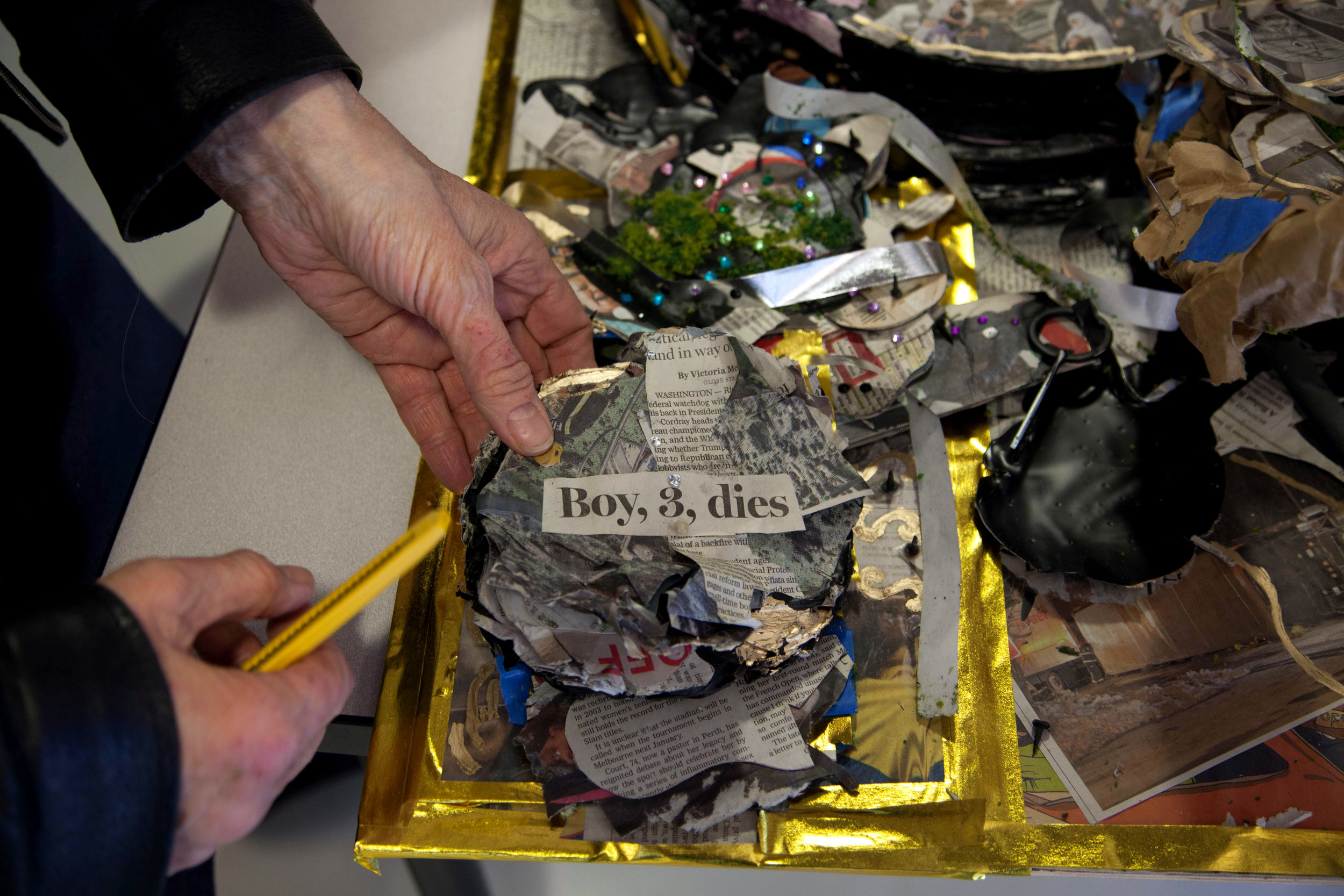
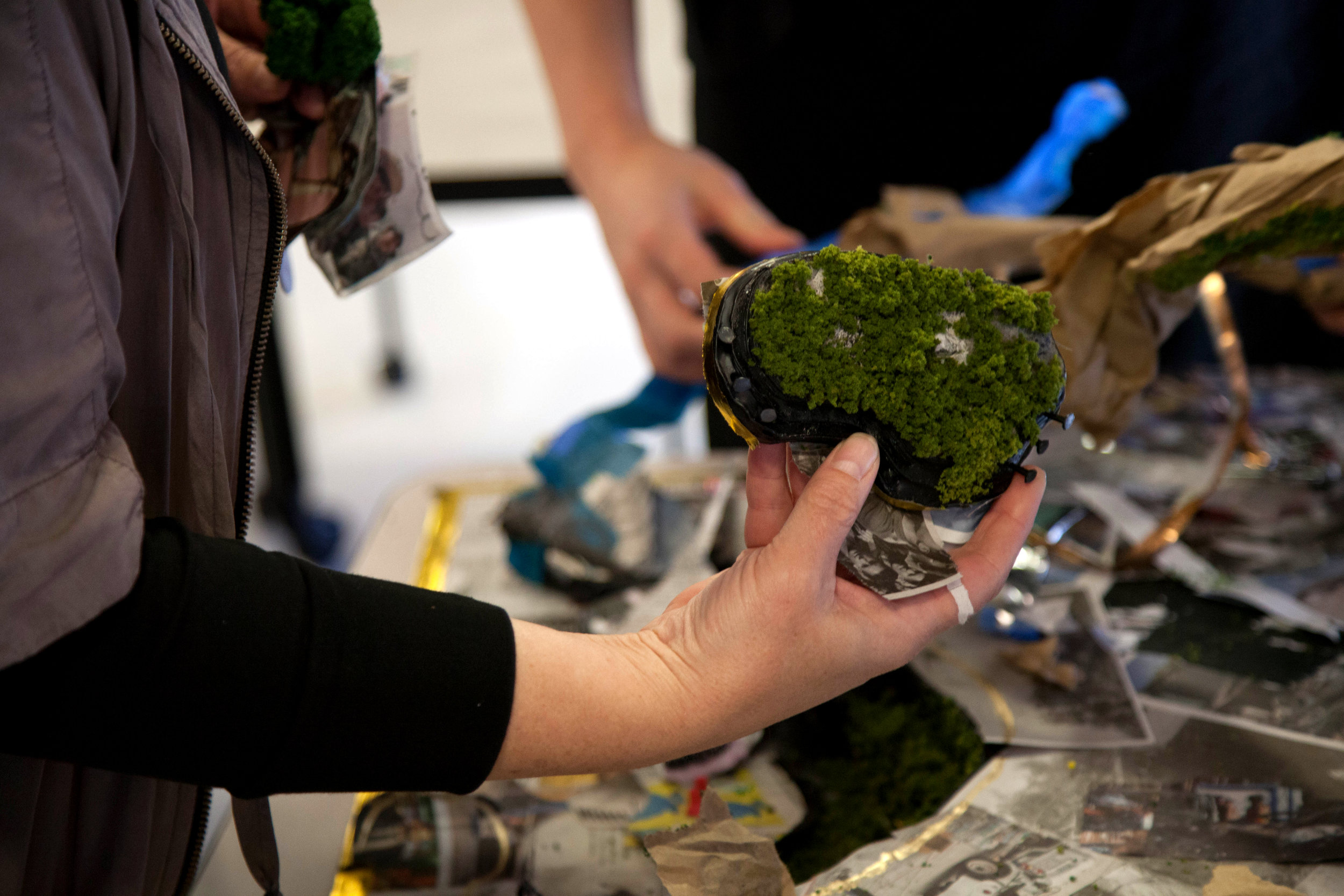
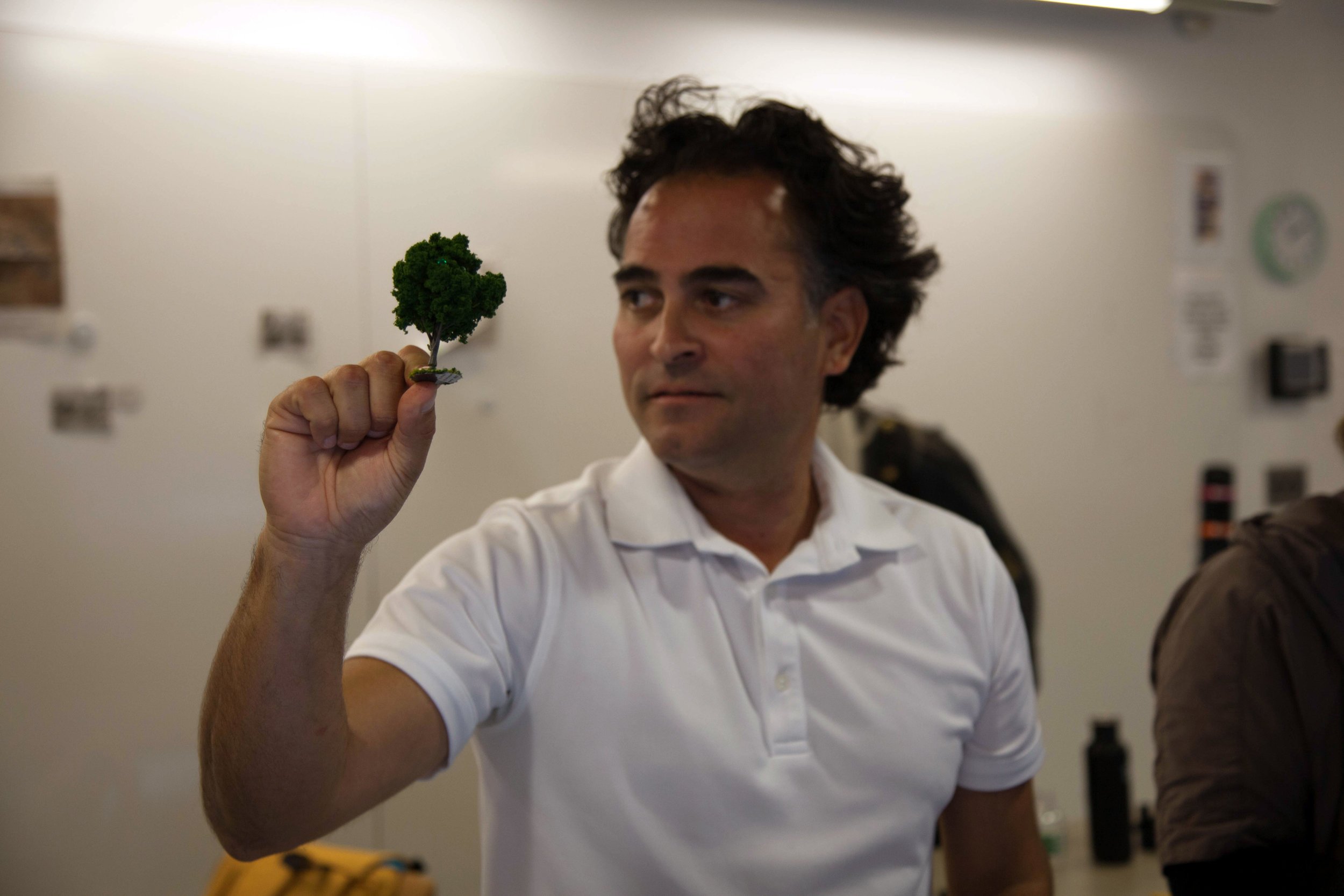

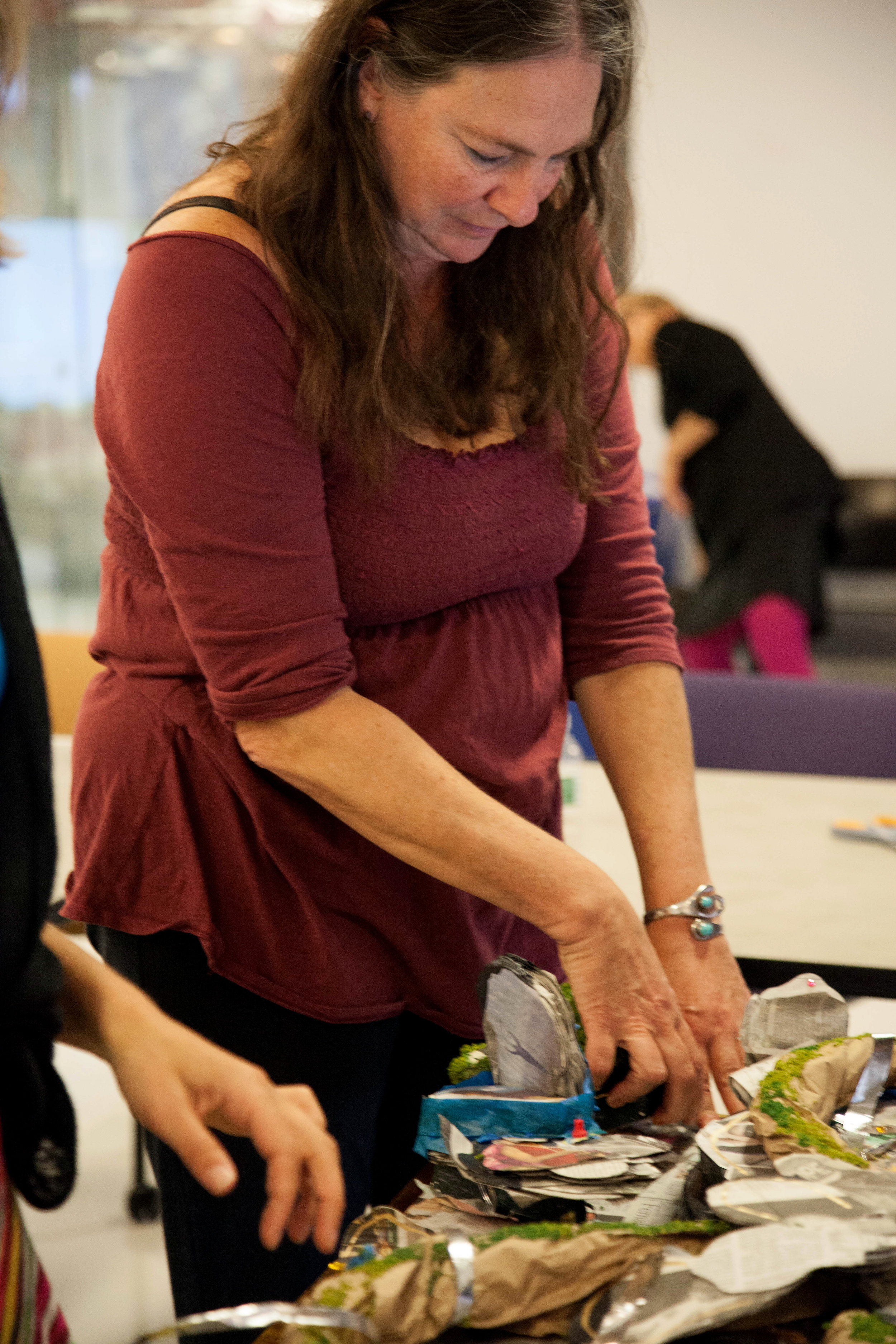
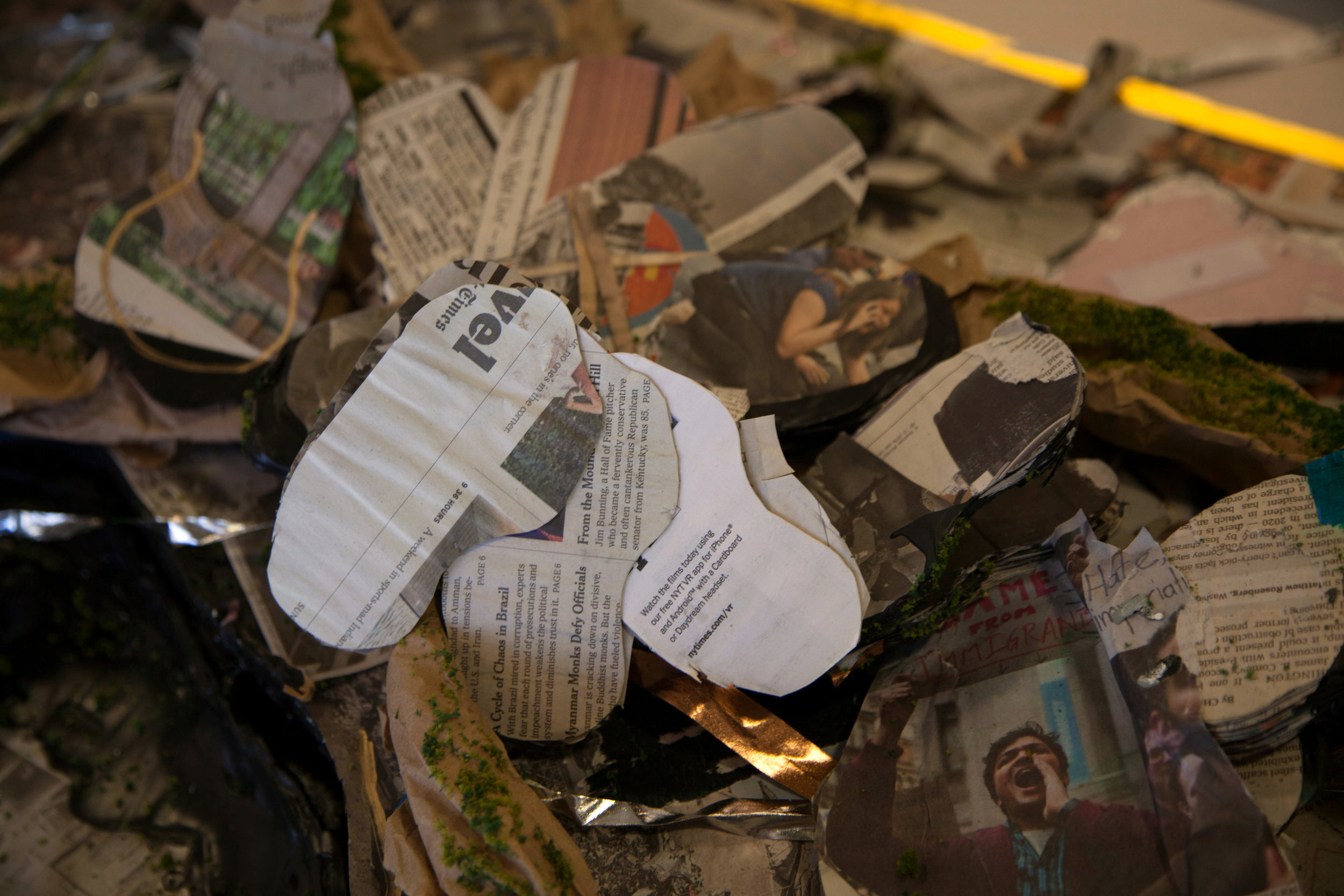
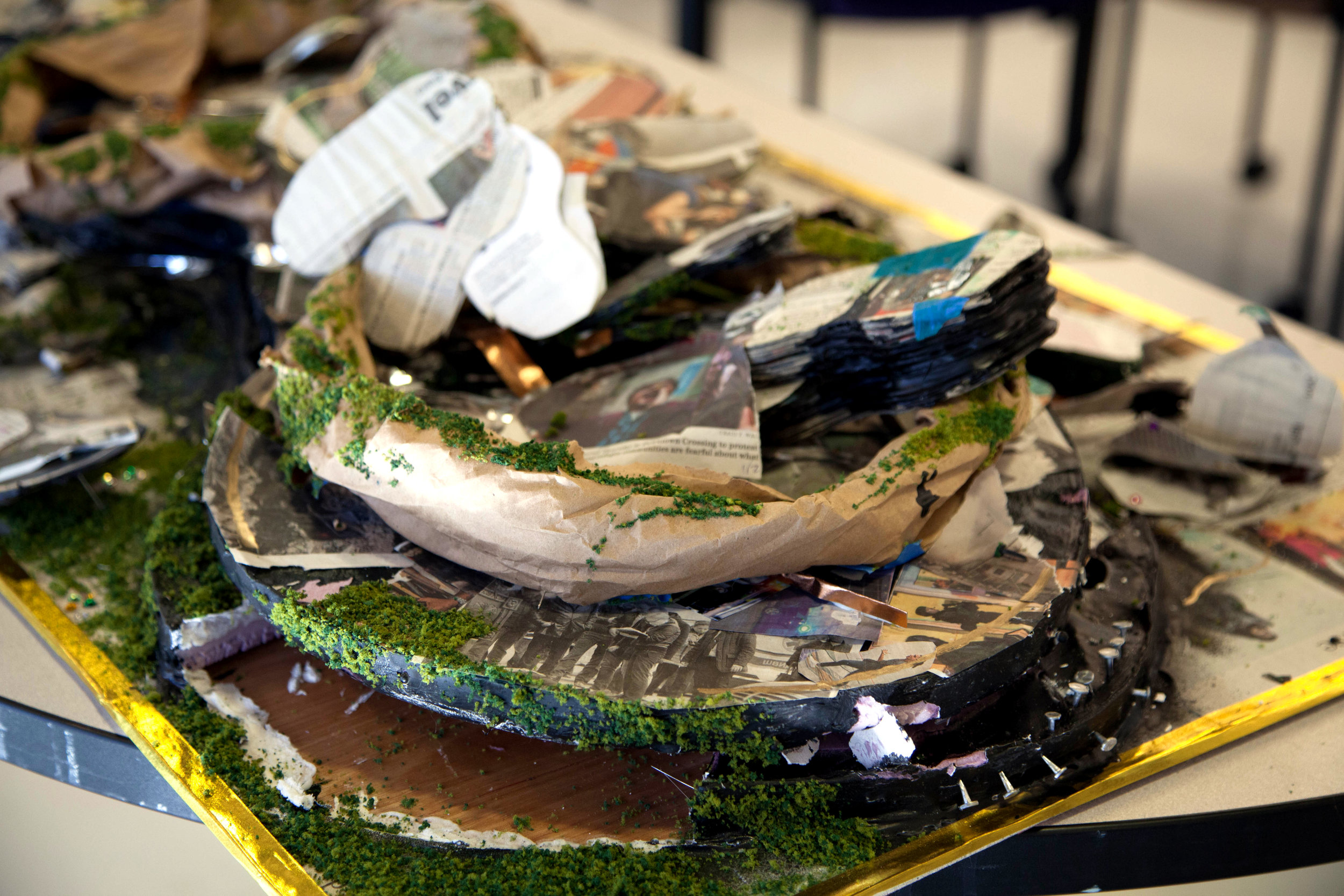
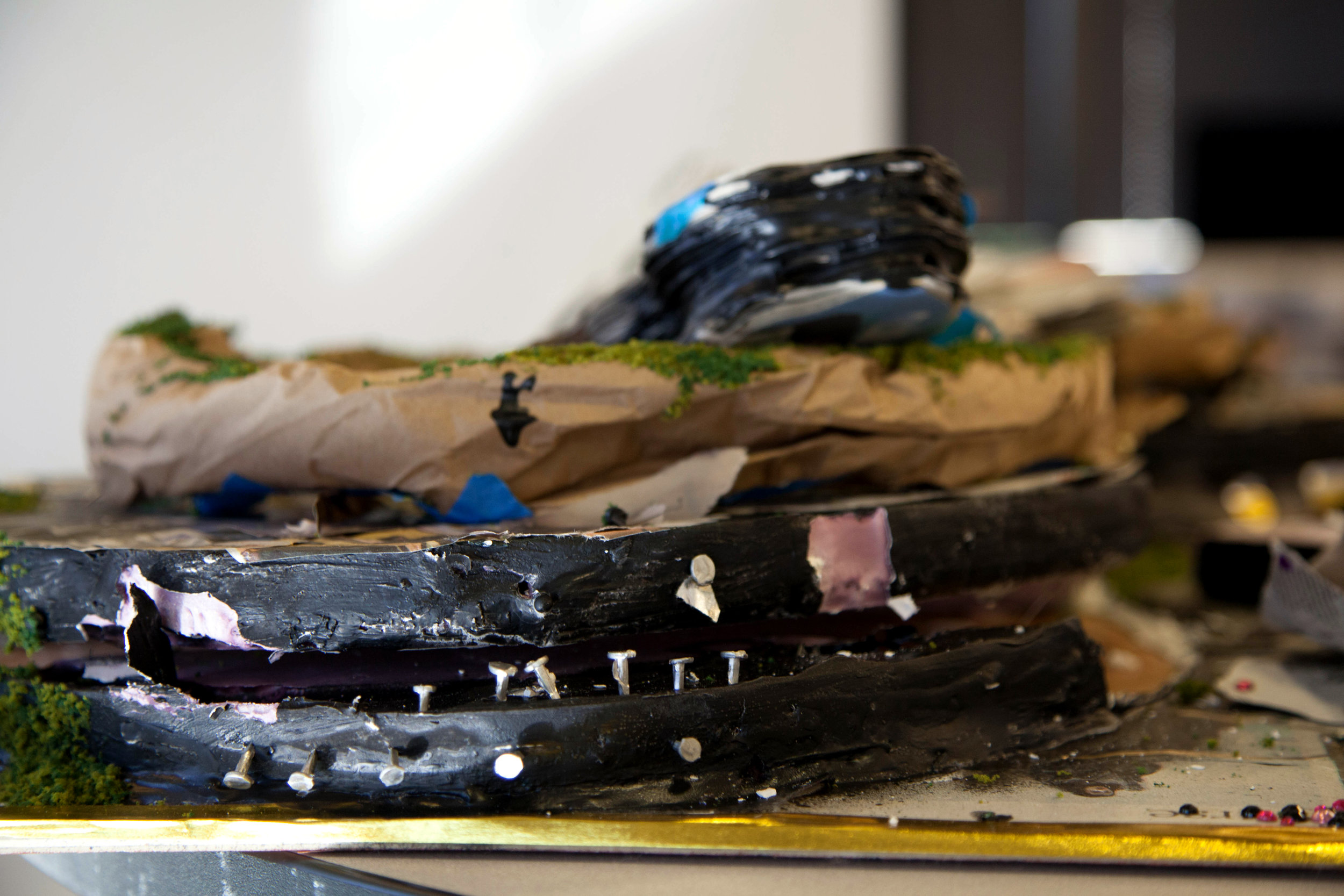
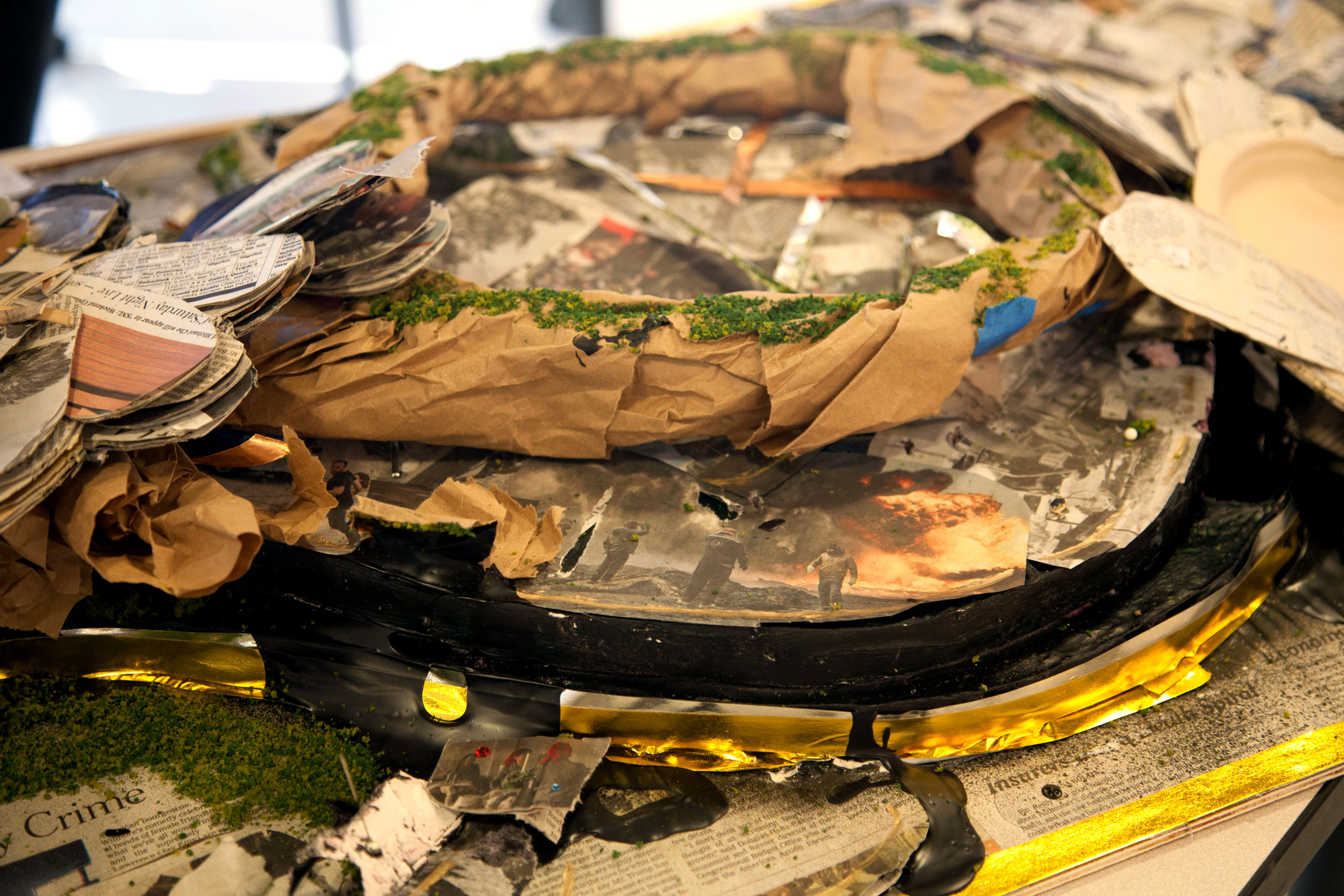
The coverage of Alan Kurdi's death on September 2, 2015 prompted my investigation into shocking and violent images and how they can spur us to action.
The accumulation with headline "Boy, 3, dies" from the first workshop was the only accumulation not to be altered through the course of the workshops.

